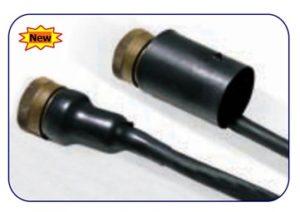
In the arena of power transmission, there has been a continual shift from paper cable technology to polymeric-insulated cable technology. However, technicians are still not very certain when it comes to making a right choice between the two of them for their application. It is very essential for the professionals to understand the reasons for making the change and not embracing change just because other individuals in the field are adopting it.
The impact of this change affects both the DC and the AC systems, albeit differently. Currently, transmission and distribution of power is taken care of largely by the AC systems because of their relatively easy transformation for the varied voltage levels. However, for longer ground cables and for submarines, HVDC systems are more advantageous.
In case of AC systems, it is the voltage levels that will influence the type and design of the cable accessory to be used. To quote an example, for cables of low voltage the comprehensive shift from paper to PE-insulated or PVC cables occurred more than 50 years ago. In this case, straight joints require accessories based on heat shrink technology; for example, heat shrink boot etc. while branch joints require accessories based on cast resin technology.
The shift to the new technology in case of MV cables occurred more recently, around the 1980s or so. One noteworthy feature that is worth mentioning at this voltage level is the availability of a huge variety in the kinds of polymeric cables. The initial paper cable constructions were available in four types namely metalized paper screened, belted, single-core and three-core single lead sheath; however, when the MV polymeric cables came to the market it came with a bang. About 100 plus varieties of this construction type were being offered and even today, a varied range of the different kinds of cable accessories are being used for this voltage levels.
With regard to high voltage levels, the EPR and XLPE cables together account for a large replacement of the earlier paper technology based cables. Accessories for polymeric cables of high voltage are silicone based mainly due to certain advantages offered by them. One is their hydrophobic properties when used on cable terminations and the other is their gas penetration rate and softness when applied in the production of joints.
Talking of the DC systems, the relevant area is the HV levels and here the paper-insulated cable technology still provide performance benefits over the newer technology. This is because in the context of conventional line-commutated converters load flow is changed by reversal of voltage polarity and therefore subsequent breakdown because of modification in distribution of the electric field can occur. Event though, many applications are preferring the environment friendly and low maintenance polymeric cable technology, DC systems using modern voltage source converters can only go for them.
There is no doubt that traditional paper cable technology is being gradually replaced alongside an equivalent impact being made on the kinds of accessories required. At the same time there are certain applications where the old technology still holds supreme. It is necessary to bear this fact in mind while determining the type of technology that will best suit your application.